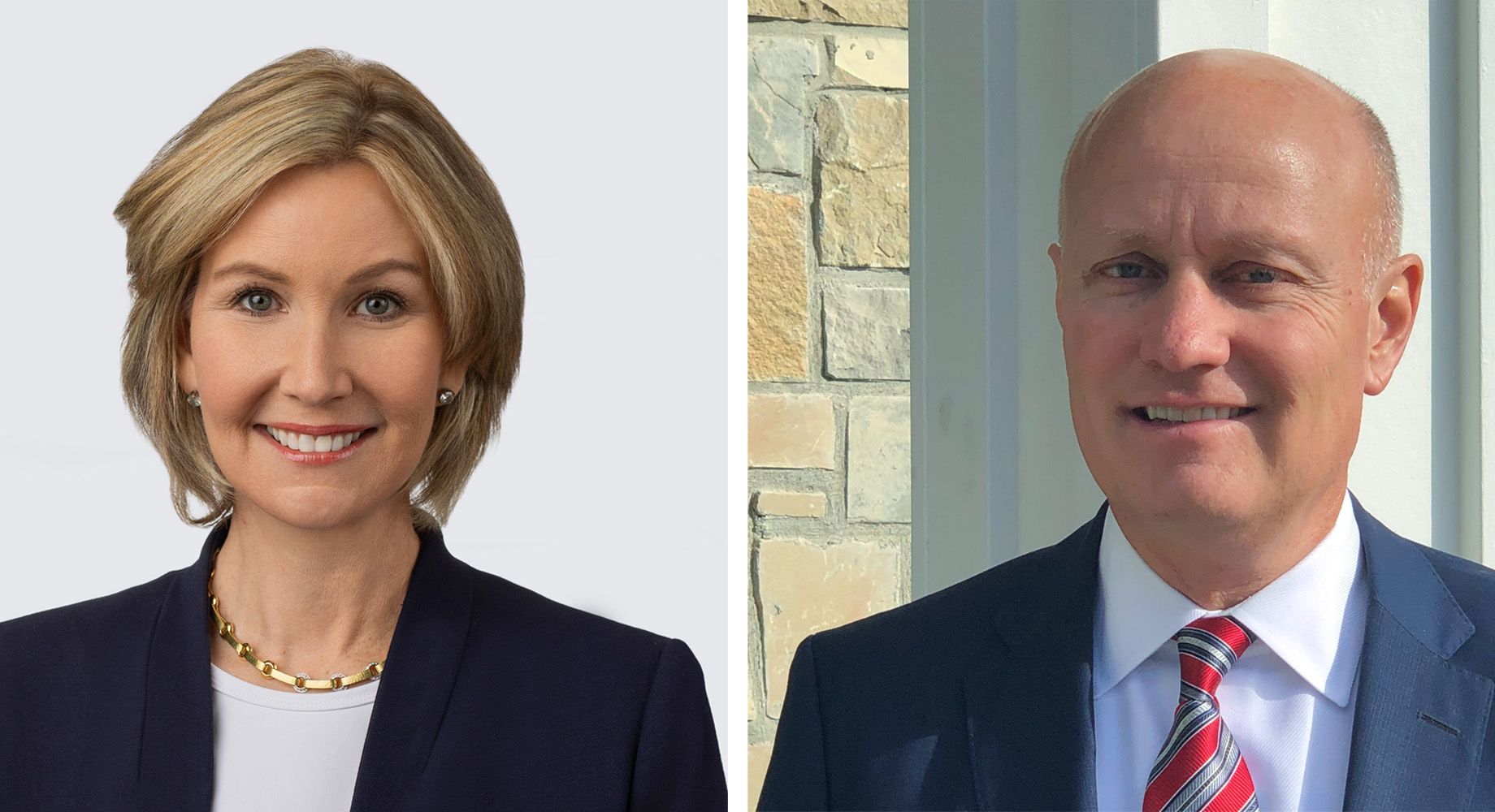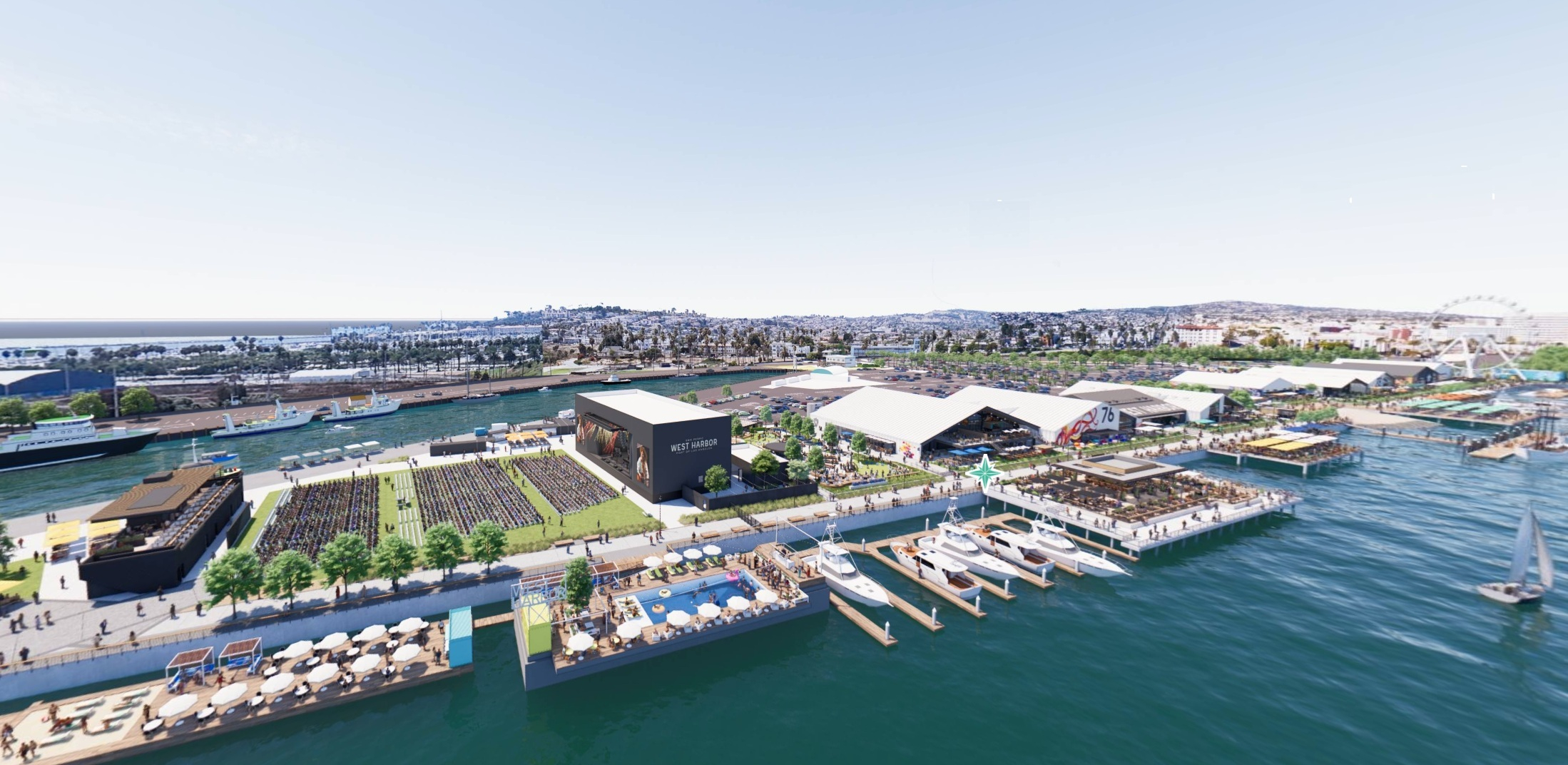The Short Version
- West Harbor, a public-private mixed-use development at The Port of Los Angeles, used C-PACE financing to help fund its second phase of construction.
- C-PACE originations surpassed $10 billion by the end of 2024, including more than $2.5 billion in deals last year.
- Bayview PACE and Oceanview Life and Annuity Co. provided a combined financing package that included $10 million in C-PACE and a $51.5 million senior loan.
- Bayview PACE executives say retail projects now make up a growing share of their pipeline.
- The financing tool continues to gain traction for its cost-effectiveness and increasing lender acceptance.
- Experts say C-PACE works especially well for large, complex projects and is increasingly used in core capital stacks.

New Port of Los Angeles waterfront development West Harbor recently secured $10 million in Commercial Property Assessed Clean Energy financing to help fund its second phase of construction. Once complete, the 42-acre, open-air district will feature 375,000 square feet of retail, food-and-beverage and entertainment venues.
Though hospitality and multifamily projects have led C-PACE adoption, West Harbor’s capital stack indicates the alternate source of financing is gaining traction for retail and mixed-use projects, as well.
C-PACE — which provides long-term, low-cost construction financing for new and existing buildings — continues its hockey stick-like trajectory, reaching $9.8 billion in total originations by the end of 2024, including $2.6 billion in deals closed last year, according to data from the C‑PACE Alliance. Property owners and developers use C-PACE financing on eligible improvements related to energy and water efficiency, renewable energy and resiliency measures to lower their overall cost of capital.
Bayview PACE and Oceanview Life and Annuity Co. provided a combined financing package for West Harbor, including C-PACE financing from Bayview and a $51.5 million senior loan from Oceanview. C+CT contributing editor Beth Mattson-Tieg recently spoke with Bayview PACE senior vice president Anne Hill and senior vice president of originations Brian Selander about the current dynamics shaping C-PACE lending.

Bayview PACE’s Anne Hill and Brian Selander Photos courtesy of Bayview PACE
How prevalent is C-PACE in retail and mixed-use financing?
Hill: Historically, it’s been very heavy in hospitality, but right now we have the highest percentage of retail that we’ve ever had in our pipeline. Almost every urban office or multifamily project we’re looking at has a very significant retail component, and we also have a handful of all-retail transactions in our pipeline. So versus years past, there’s definitely a noticeable increase in the amount of retail projects using C-PACE.
Aside from construction activity, what’s driving the growth of C-PACE financing?
Selander: There’s more market understanding and market acceptance of C-PACE and how to use it. It definitely lowers the cost of capital in a capital markets or Wall Street-type execution for debt. The financing rate from a debt fund might be 500 to 600 basis points over the 30-day [Secured Overnight Financing Rate], compared to C-PACE that is currently pricing closer to 300 basis points over the 10-year Treasury. Because C-PACE is generally less expensive, the result is a lower blended rate.
Hill: C-PACE is now more mainstream. You’re seeing the large mortgage bankers understand this product and get comfortable with it, and they’re bringing it to the larger developers and building owners. It just makes sense to incorporate it as a larger component of the capital stack, and it’s being used as part of the core financing of the deal.
“It definitely lowers the cost of capital in a capital markets or Wall Street-type execution for debt.”
Why did West Harbor opt for C-PACE financing?
Selander: I believe that it was a cost of capital decision to use C-PACE, and because this West Harbor deal is a large and unique project, it lends itself to a PACE execution. One of the early challenges with C-PACE was that prepayment was perceived to be inflexible. C-PACE lenders have found ways to become more flexible with respect to prepayment. At the same time, no C-PACE lender wants to put their money out only to get it back really quickly. So if your deal doesn’t have a medium to longer lifespan [in terms of] construction, then it’s not going to lend itself to C-PACE as well if you want to just hurry and flip it into a new loan.

West Harbor, a 42-acre open-air retail, dining and entertainment destination under construction along The Port of Los Angeles waterfront, is a public-private partnership between the port and a joint venture of Los Angeles-based Jerico Development and The Ratkovich Co. Phase 2 is underway. Rendering courtesy of Studio One Eleven
Did the project also use C-PACE in Phase 1?
Selander: There was Phase 1 C-PACE. We stepped in and did Phase 2, which included adding to the C-PACE, but we left the Phase 1 C-PACE in place. Essentially, we added to the C-PACE and upsized the overall financing on the project.
Is there anything notable or unique about the use of C-PACE in the West Harbor deal?
Hill: West Harbor has a ground lease. Historically, borrowers have thought that C-PACE won’t work with a ground lease, but it does. The Port of Los Angeles holds the ground lease. They supported the project, and they were very amenable to bringing PACE into the capital stack.
Where does C-PACE typically fit into the capital stack?
Selander: C-PACE sits after property tax and before the senior loan. If you have a $100 million project and you’re going to get leverage of 70%, you could probably get roughly half of that, about $35 million, in C-PACE and half in senior debt. The remaining $30 million might be straight common equity or a combination of preferred equity or mezzanine financing and common equity above that. C-PACE is priced where it is because it’s the most senior piece. A big misunderstanding the market had when PACE was originally rolled out was that you could use it to replace mezzanine and that it was above the senior loan. That’s not accurate. Once you understand that and use it properly, it becomes a more powerful tool, and one of the reasons the average deal size of PACE has skyrocketed is because you have more sophisticated borrowers and larger deals that are recognizing how to use it.
Is C-PACE financing growing in terms of total dollar amount or share of the capital stack, or is it both?
Hill: Definitely both. When I first started doing this 10 years ago, the average deal size in the first C-PACE securitization was $800,000. Last year, the average deal size in the one public securitization was $11 million. Additionally, the C-PACE programs have become more and more flexible in terms of what they’re allowing. Initially, it was financing just energy efficiency or renewable energy. Now, most programs also allow for resiliency, which would include things like seismic improvements or improvements that protect the building against hurricanes, flooding and other natural disasters. When we’re looking at a project in California or Florida, easily 50% of the costs on new construction are going to qualify for PACE.
Are there any other emerging advantages or developments in C-PACE financing that industry professionals should be watching?
Selander: The traditional way a developer builds a property has been that they’ve got their bank or multiple bank relationships. They go to the bank to get a construction loan, and inevitably, borrowers run into the problem of hitting lender dollar limits. If you think of PACE as a replacement for equity or mezzanine, it doesn’t really solve that problem, but if you think of PACE as a way to reduce my relationship bank’s exposure to me, then that opens up capacity for me to do more deals with my bank. From the bank’s perspective, it allows them to do more deals with their client and generate more fees. Their last dollar risk doesn’t change, but it does help with their lender limit so they can still do a deal because banks don’t want them going next door to another bank and losing them as a client. That’s where C-PACE can generate a win-win for borrowers and banks and C-PACE lenders.
“If you think of PACE as a replacement for equity or mezzanine, it doesn’t really solve that problem, but if you think of PACE as a way to reduce my relationship bank’s exposure to me, then that opens up capacity for me to do more deals with my bank.”
What’s your outlook for continued C-PACE growth, particularly within the retail and mixed-use sectors?
Hill: We’re seeing continued growth for PACE in all property types because it’s more cost-effective and there’s more awareness around it so borrowers and mortgage brokers are much more open to it. The final hurdle for PACE has always been: Can you get the lender to consent to it? For a number of reasons, lenders now consent to it, but there also is a big trend of delivering a combined solution. That’s what we’re doing at Bayview, providing both the senior and C-PACE, which creates a much better solution and option for borrowers.